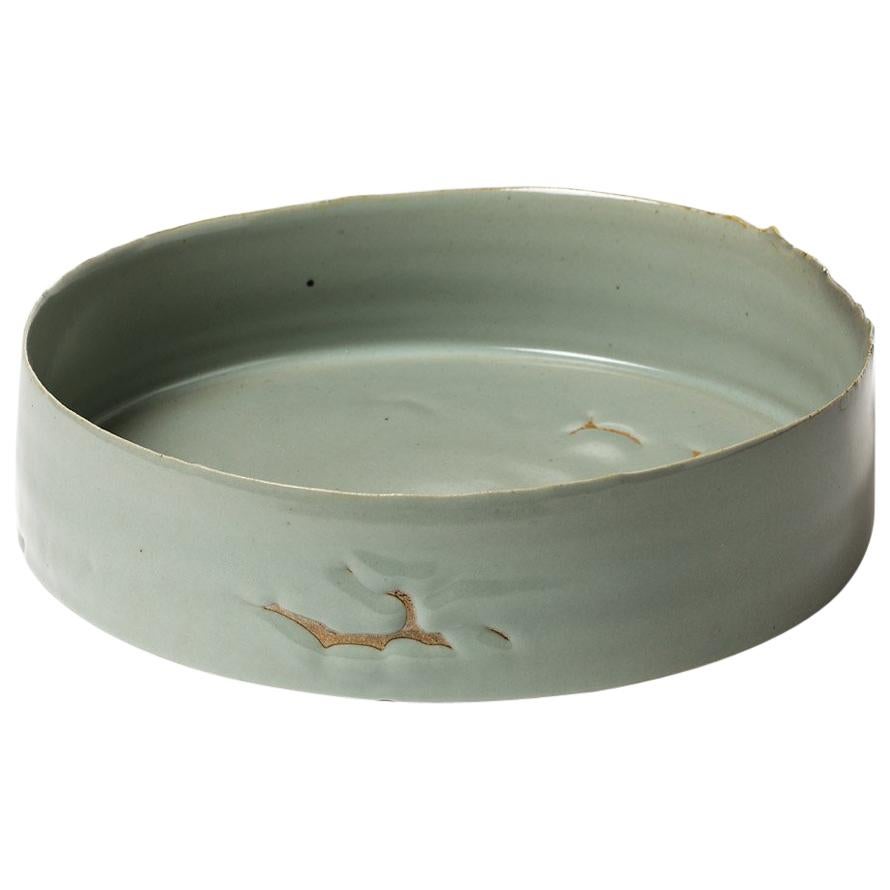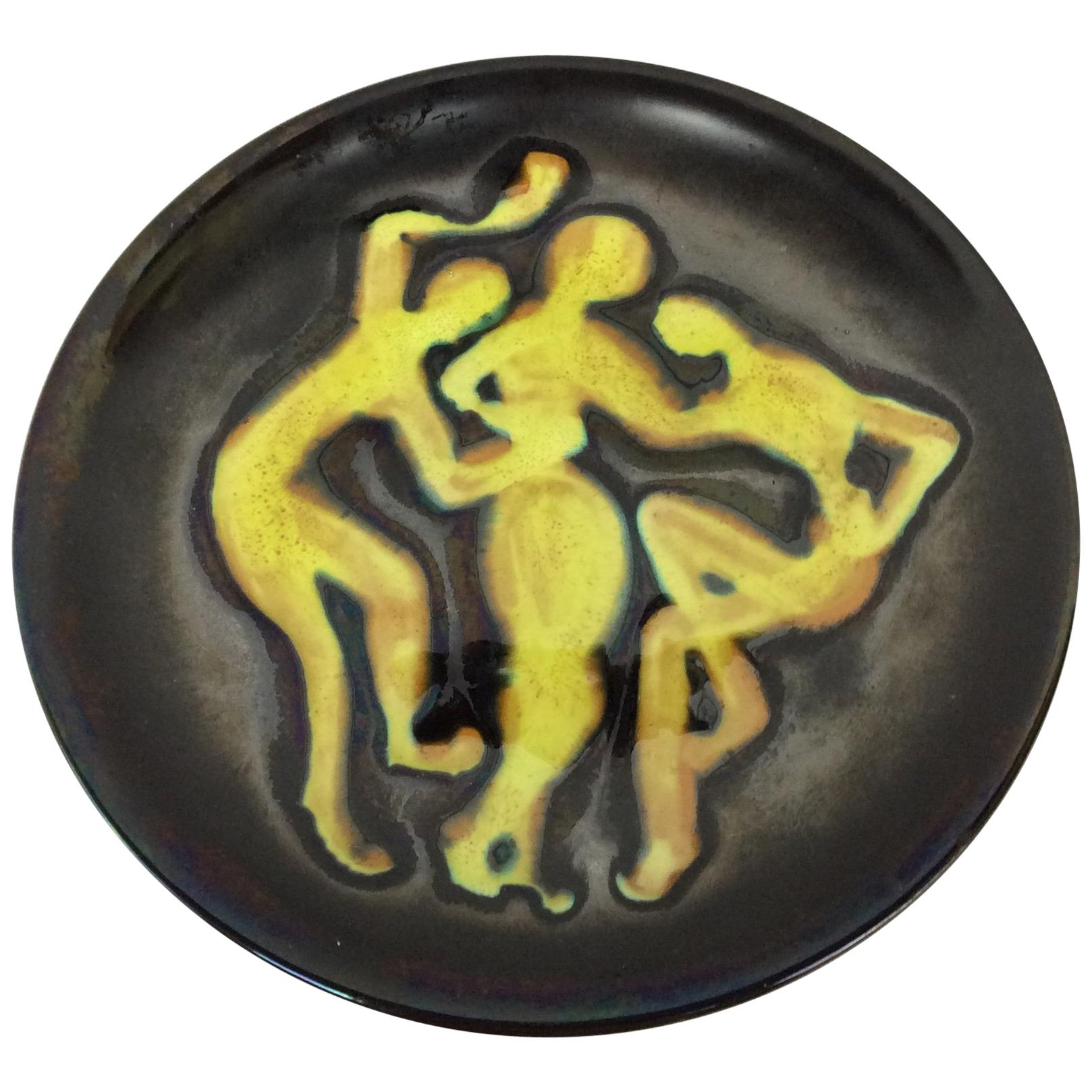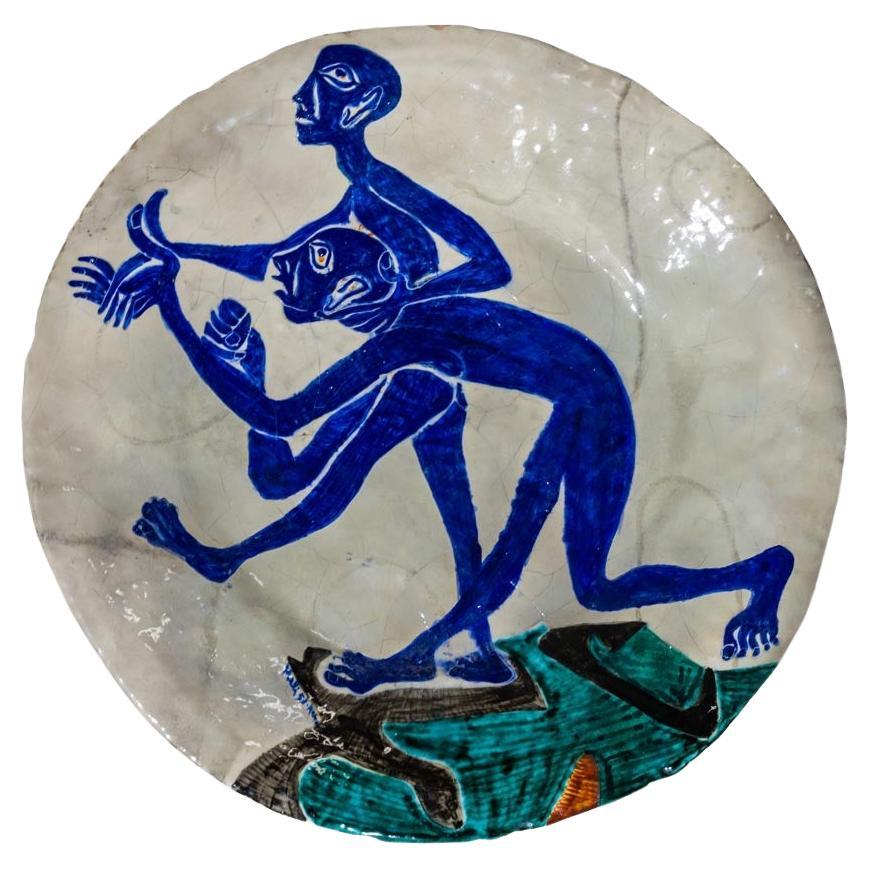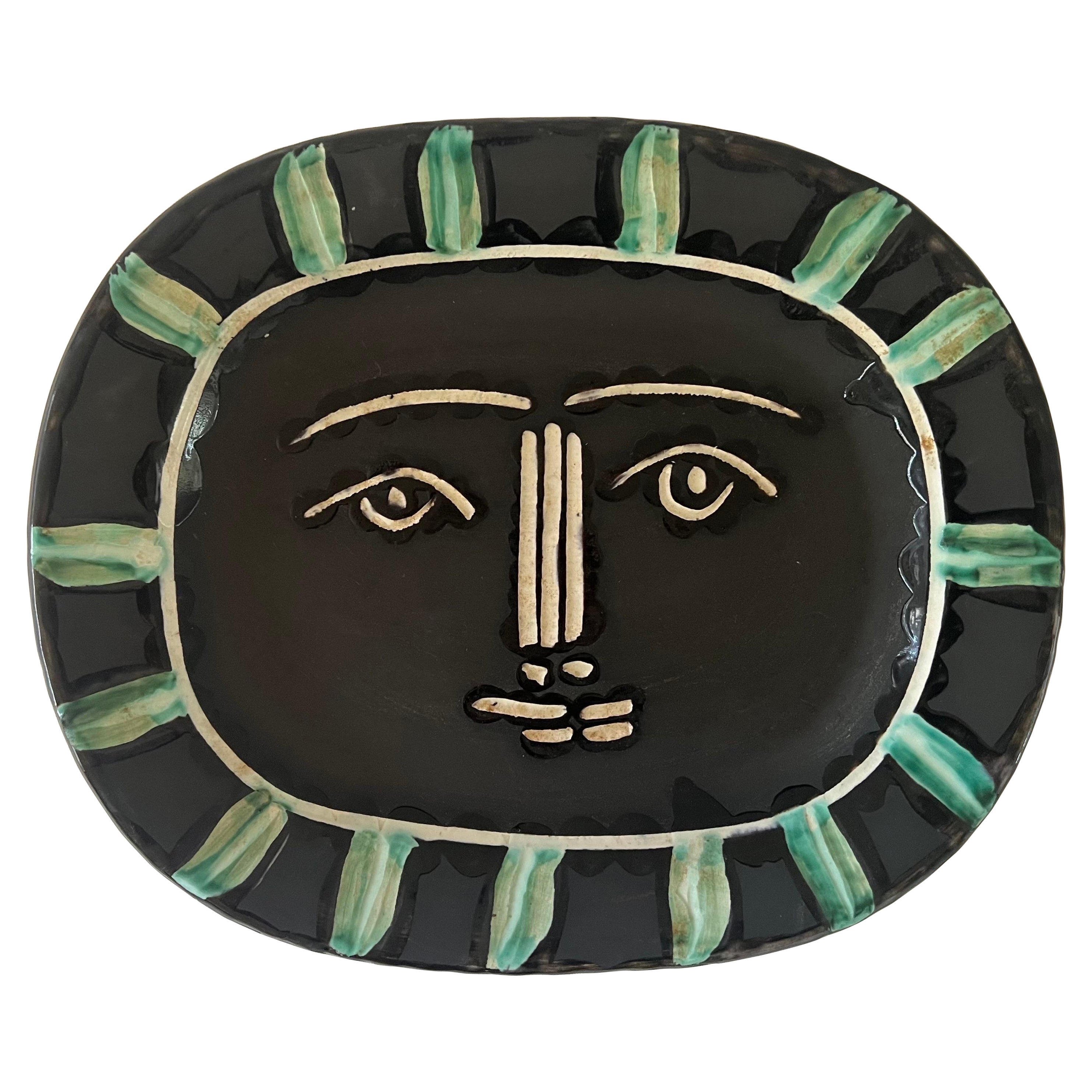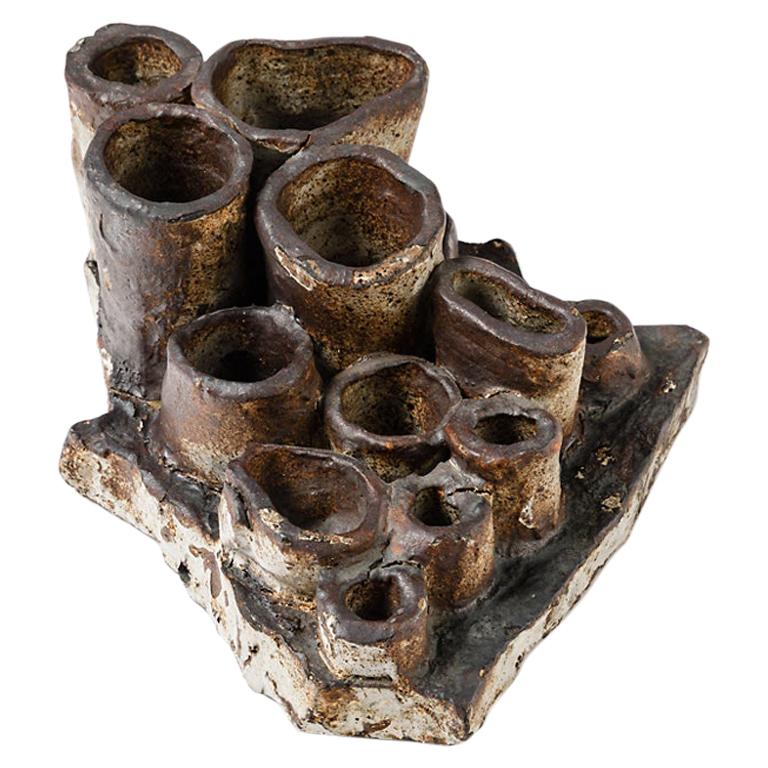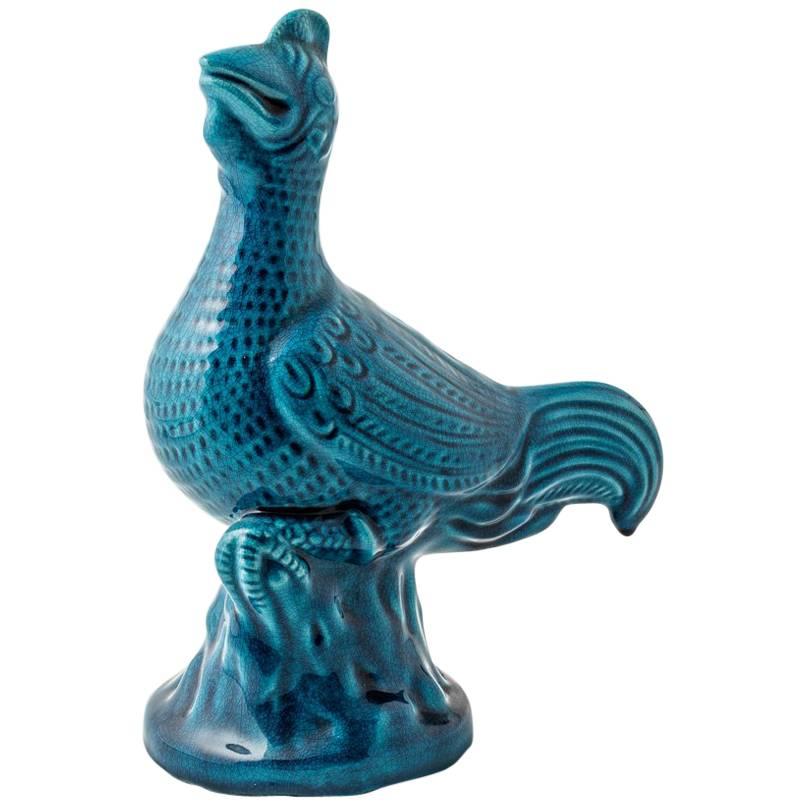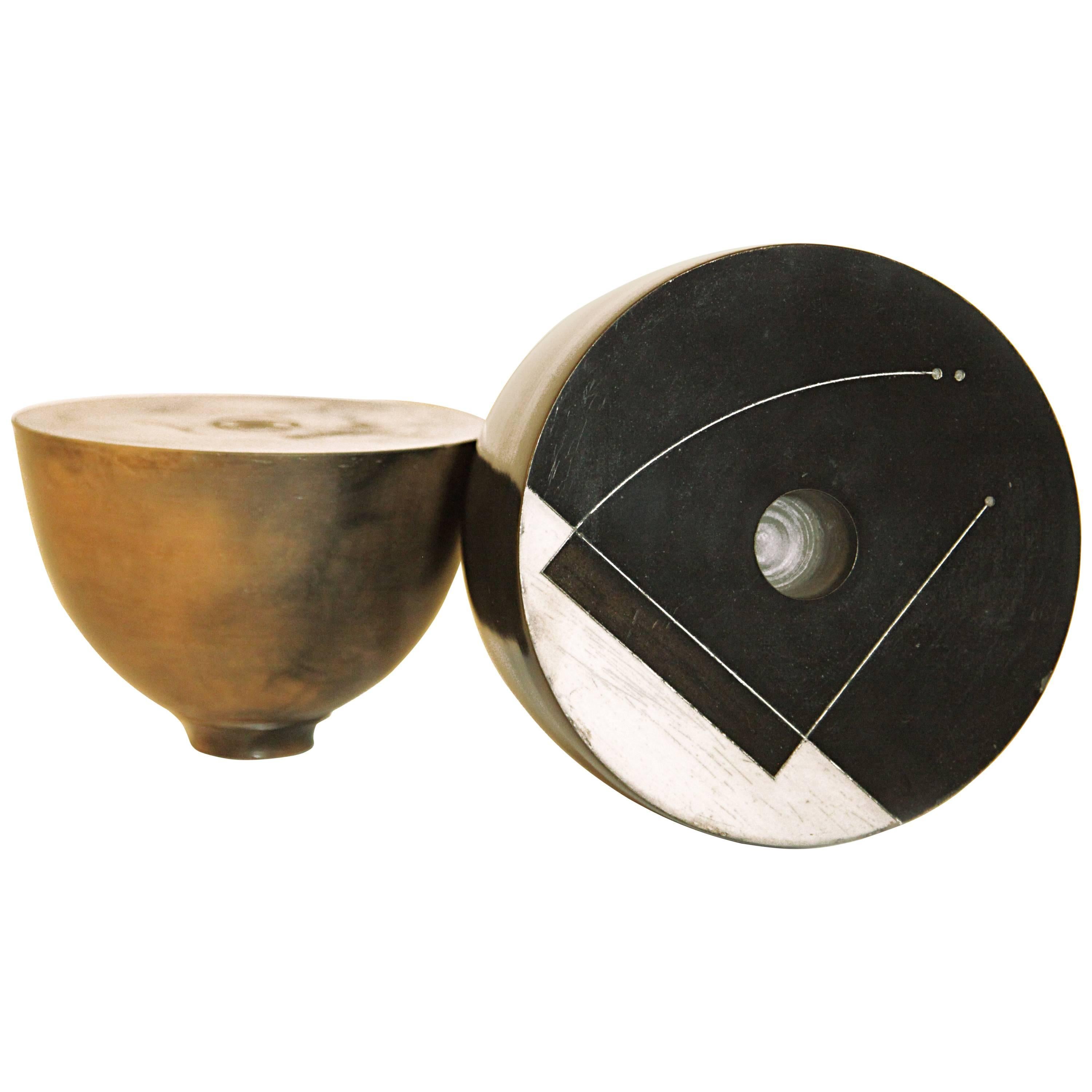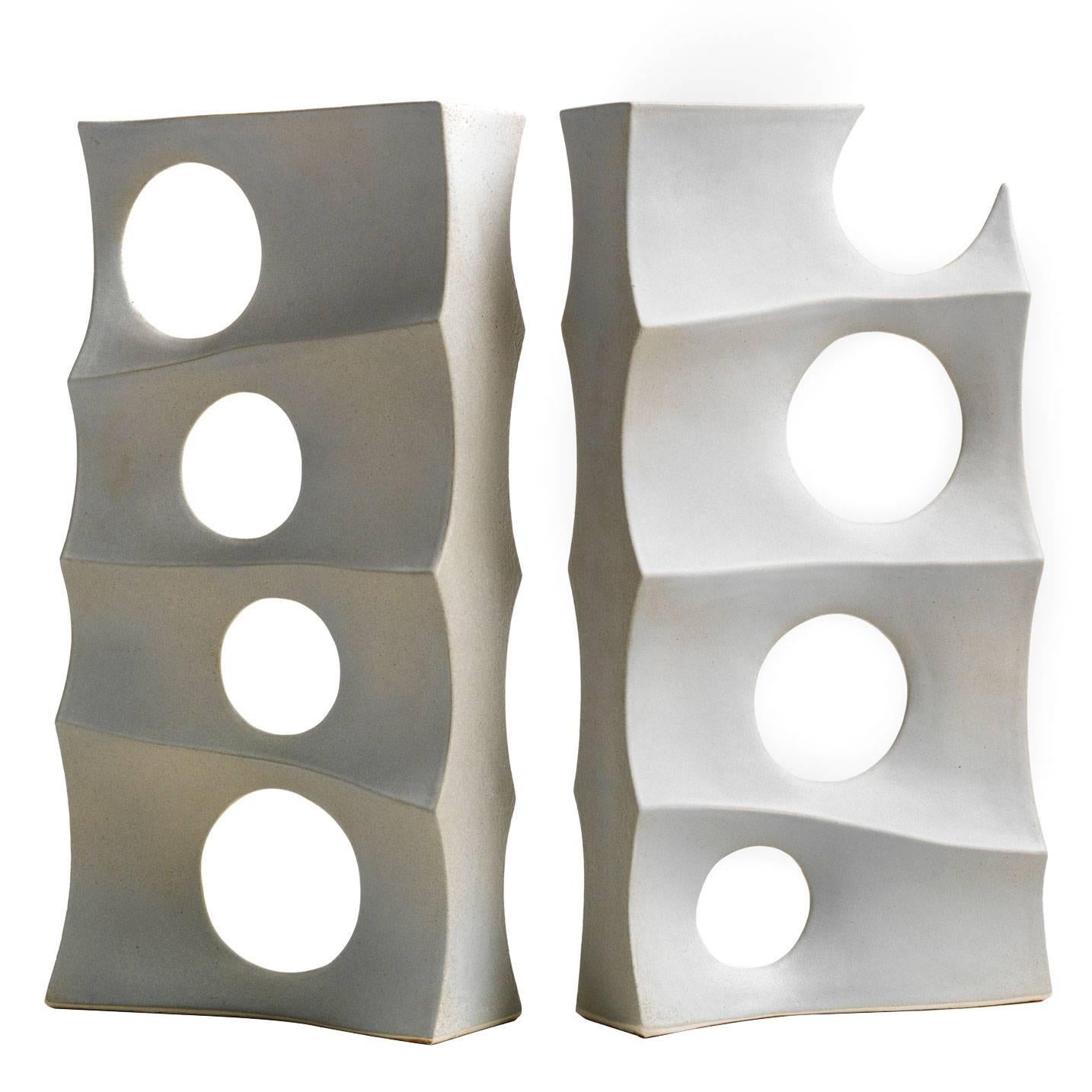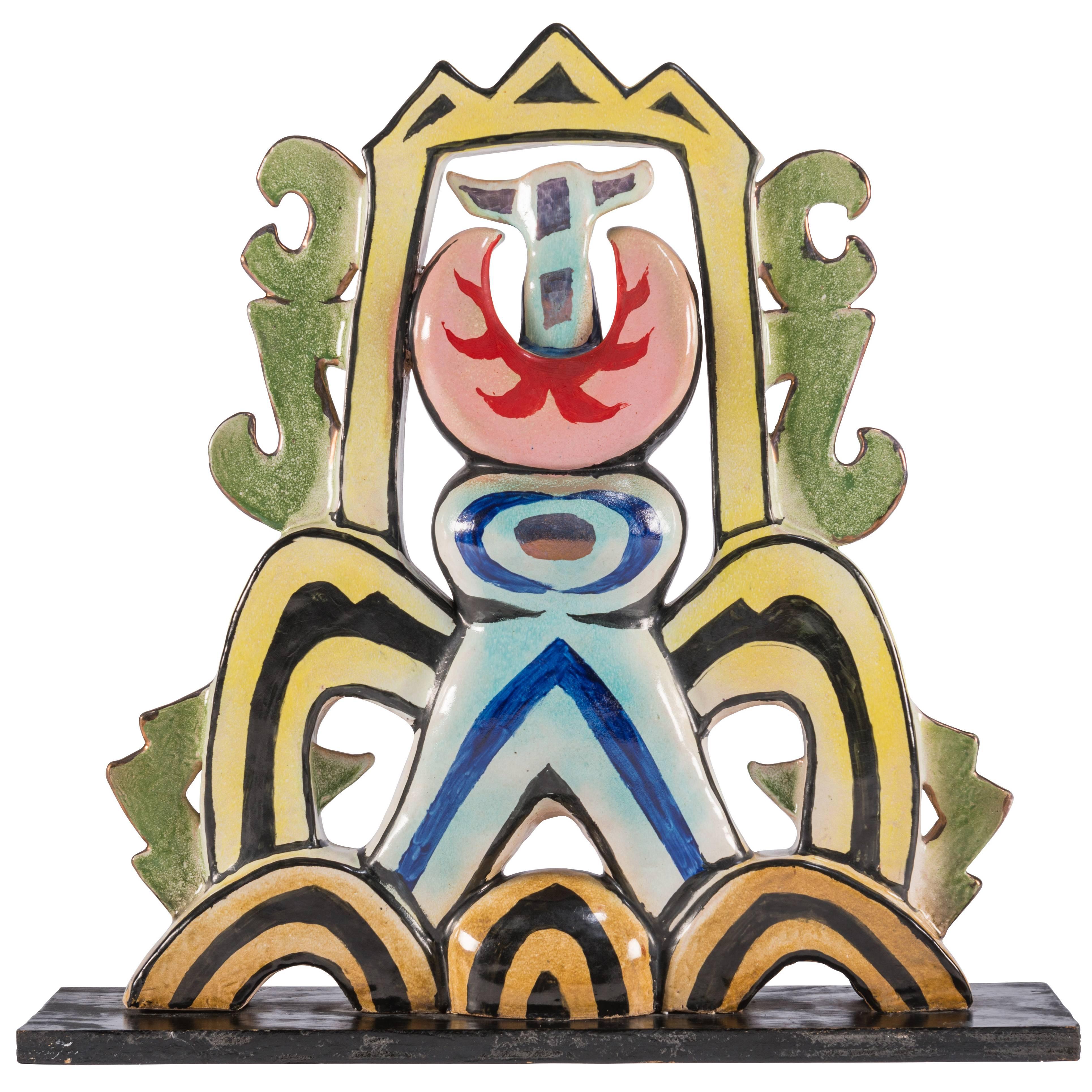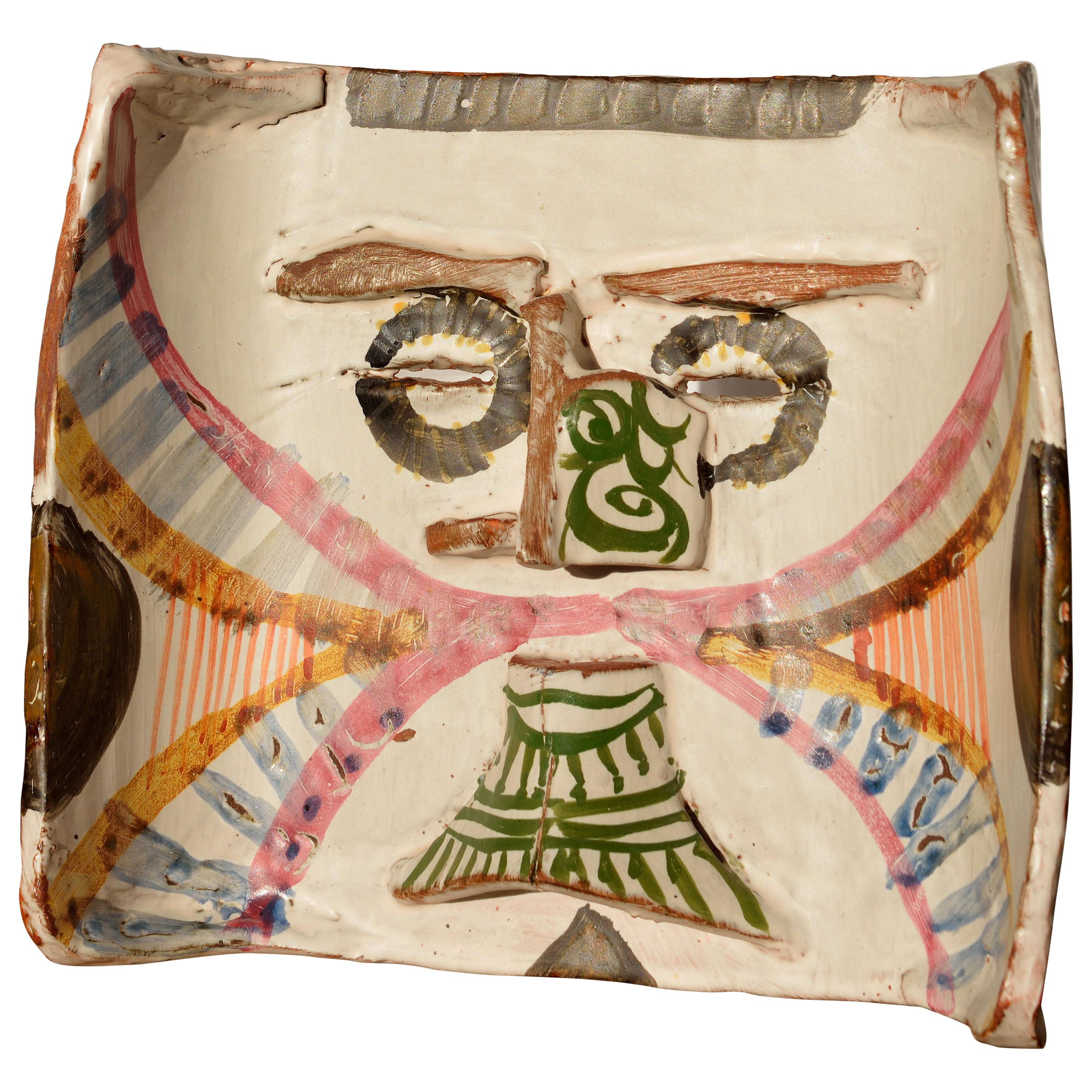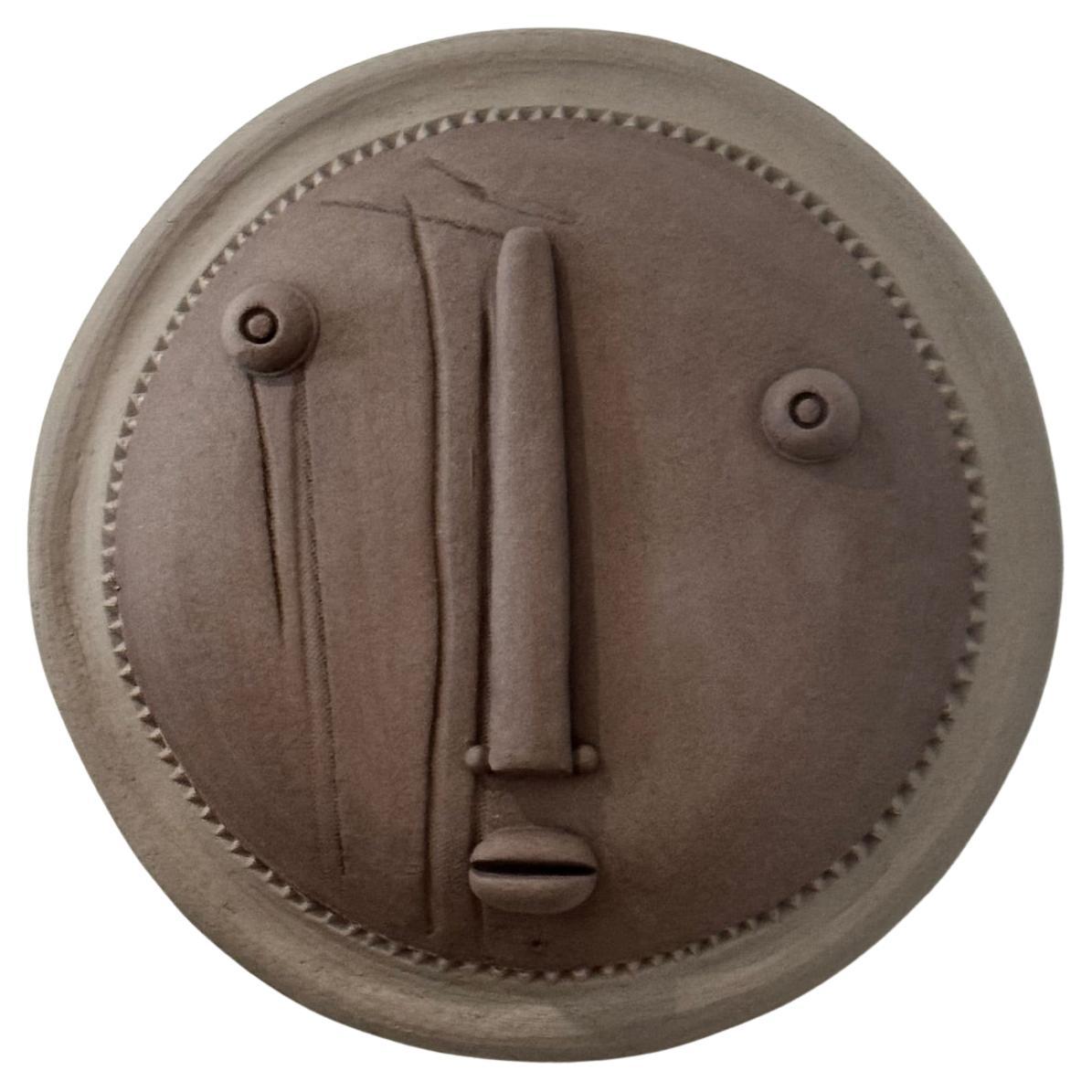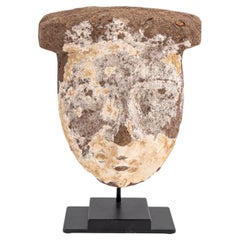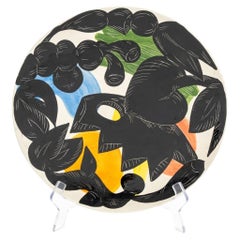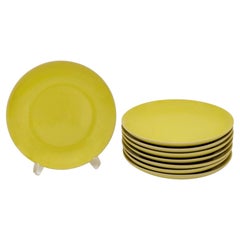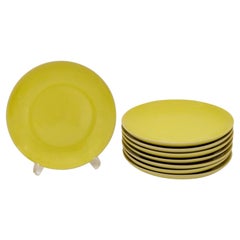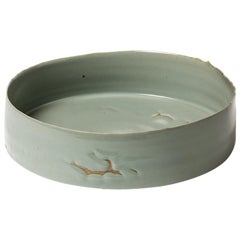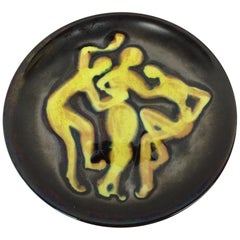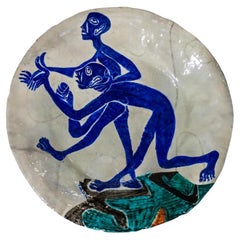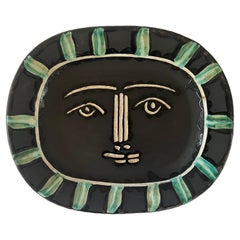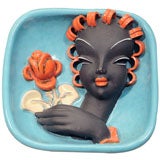
Ceramic Mask Plate by Karl Grossl
View Similar Items
Want more images or videos?
Request additional images or videos from the seller
1 of 7
Ceramic Mask Plate by Karl Grossl
$1,800List Price
About the Item
- Dimensions:Height: 1.5 in (3.81 cm)Width: 11 in (27.94 cm)Depth: 3 in (7.62 cm)
- Place of Origin:
- Period:
- Date of Manufacture:circa 1930s
- Condition:Wear consistent with age and use.
- Seller Location:Astoria, NY
- Reference Number:Seller: S138XX1stDibs: 100504889370
About the Seller
4.9
Gold Seller
Premium sellers maintaining a 4.3+ rating and 24-hour response times
1stDibs seller since 2010
2,589 sales on 1stDibs
Typical response time: 5 hours
Authenticity Guarantee
In the unlikely event there’s an issue with an item’s authenticity, contact us within 1 year for a full refund. DetailsMoney-Back Guarantee
If your item is not as described, is damaged in transit, or does not arrive, contact us within 7 days for a full refund. Details24-Hour Cancellation
You have a 24-hour grace period in which to reconsider your purchase, with no questions asked.Vetted Professional Sellers
Our world-class sellers must adhere to strict standards for service and quality, maintaining the integrity of our listings.Price-Match Guarantee
If you find that a seller listed the same item for a lower price elsewhere, we’ll match it.Trusted Global Delivery
Our best-in-class carrier network provides specialized shipping options worldwide, including custom delivery.More From This Seller
View AllEgyptian Painted Sarcophagus Mask
Located in Astoria, NY
Egyptian Painted Sarcophagus Mask, gesso over wood composite, mounted on metal base. Overall: 11" H x 7.5" W x 3.75" D. Provenance: From a Fifth Avenue Collection.
Category
Antique 15th Century and Earlier Egyptian Egyptian Figurative Sculptures
Materials
Gesso, Wood
Hewitt Abstract Art Pottery Wall Plate
Located in Astoria, NY
Hewitt (American, XX), Abstract Art Pottery Wall Plate, signed to underside, 20th century. 2.75" H x 13.5" Diameter. Provenance: From an Upper West Side Collection.
Category
20th Century American Post-Modern Ceramics
Materials
Pottery
Rupert Spira Yellow Glazed Stoneware Plates, 8
By Rupert Spira
Located in Astoria, NY
Rupert Spira (English, b. 1960) Set of Eight Yellow Glazed Stoneware Salad Plates, marked "RS" to the underside. 7.5" Diameter. Provenance: Property from an Upper East Side Townhouse.
Category
21st Century and Contemporary British Minimalist Ceramics
Materials
Stoneware
Rupert Spira Yellow Glazed Stoneware Plates, 8
By Rupert Spira
Located in Astoria, NY
Rupert Spira (English, b. 1960) Set of Eight Yellow Glazed Stoneware Salad Plates, marked "RS" to the underside. 7.5" Diameter. Provenance: Property from an Upper East Side Townhouse.
Category
21st Century and Contemporary British Minimalist Ceramics
Materials
Stoneware
Louis Mendez Ceramic Nude Centaur Sculpture
Located in Astoria, NY
Louis Mendez (American, 1929-2012) hand-built raku-fired ceramic pottery statue sculpture depicting a horned and winged male centaur creature glazed russet red on unglazed legs, text...
Category
20th Century American Craftsman Figurative Sculptures
Materials
Ceramic, Pottery
$550 Sale Price
35% Off
Rupert Spira Glazed Stoneware Tall Coffee Cups, 6
By Rupert Spira
Located in Astoria, NY
Rupert Spira (English, b. 1960) Set of 6 Yellow Glazed Stoneware Coffee Cups, each marked "RS" to the underside. 5" H x 4.5" W x 2.75" D. Provenance: Property from an Upper East Side...
Category
21st Century and Contemporary British Minimalist Ceramics
Materials
Stoneware
You May Also Like
Collectible Rare Celadon Ceramic Plate by Emmanuel Boos French Artist
Located in Neuilly-en- sancerre, FR
Emmanuel Boos (Born in 1969)
Extremely rare celadon cup by Emmanuel Boos.
Emmanuel Boos is a famous French artist represented by an art gallery bas...
Category
21st Century and Contemporary French Abstract Sculptures
Materials
Ceramic
French Midcentury Decorative Ceramic Plate Black Matte, Signed
Located in Miami, FL
A figurative midcentury French decorative ceramic plate. The apparent very talented artist who hand-crafted this eye catching object, depicts a woman dancing with two friends. The wonderful form and colors on the black background reflect the artist's painterly attention to detail.
A beautiful addition to a collection of mid-Century modern French pottery...
Category
20th Century French Mid-Century Modern Ceramics
Materials
Ceramic
1953 hand painted signed Art Glazed Ceramic Plate by Salvatore Meli Rome Italy
By Salvatore Meli
Located in London, GB
This is 1953 Art glazed Ceramic Charger Painted with two stylised blue figures suggesting dance movement on an off white background with earth brown and grass green soil with a touch...
Category
Vintage 1950s Italian Mid-Century Modern Abstract Sculptures
Materials
Ceramic, Earthenware
Ceramic Plate Visage Gris 'Grey Face' A.R. 206 by Pablo Picasso & Madoura, 1953
By Pablo Picasso, Madoura
Located in New York, NY
The engraved and brush painted ceramic plate, Visage Gris (Grey Face) is one the most iconic pieces created by Pablo Picasso (1881 - 1973) at the Madoura workshop in Vallauris, France. It is said "all portraits are self portraits". In this work, we see Picasso's wistfulness, vulnerability and humor set within a beautiful image representing both the sun and the moon, the masculine and the feminine. Picasso mastery of form, image, composition and subtle color is evident in a work that resonates transcendence.
Created in 1953, Pablo Picasso ceramic Visage Gris (Grey Face), 1953 A.R. 206 is a Madoura white earthenware clay, knife engraved under partial brushed glaze with decoration in engobes (green, black, white) from the edition of 500. This work is stamped with the 'Madoura PLEIN FEU' and ‘EMPREINTE ORIGINALE DE PICASSO’ pottery stamps on the reverse. Dimensions: 12 3/8 x 15 1/8 x 1 5/8in (31.4 x 38.3 x 4.1cm). Madoura was an artisan workshop created by Georges and Suzanne Ramie which collaborated with Picasso in the fabrication and hand painting of the works.
Pablo Picasso designed 633 different ceramic editions between 1947 and 1971 at the Madoura workshop, with a number of variants and unique pieces resulting from these initial works. He began by creating simple, utilitarian objects such as plates and bowls, but later produced more complex forms, including pitchers and vases — their handles occasionally shaped to form facial features, or anatomical parts of his animal subjects.
Picasso remains one of the highest-grossing artists at auction today, and the range of his ceramics means it's possible to find both a good investment and a beautiful object. Visage Gris is among the most important.
A Short Biography follows:
Pablo Picasso revolutionized the art world and to many is THE artist of the 20th century. He is famous for his role in pioneering Cubism with Georges Braque and for his melancholy Blue Period pieces. Original signed Picasso lithographs and prints are a sure investment. Madoura Picasso ceramics are highly collectible in their own right.
As one of the most influential Modern artists of the 20th century, Pablo Picasso is renowned as a legendary artistic master to this day. Born on October 25, 1881 in Malaga, Spain, Pablo Picasso was a child prodigy who was recognized as such by his art-teacher father, who ably led him along. The small Museo de Picasso in Barcelona is devoted primarily to his early works, which include strikingly realistic renderings of casts of ancient sculpture.
Picasso was a rebel from the start and, as a teenager, began to frequent the Barcelona cafes where intellectuals gathered. He soon went to Paris, the capital of art, and soaked up the works of Edouard Manet, Gustave Courbet, and Henri de Toulouse-Lautrec, whose sketchy style impressed him greatly. Then it was back to Spain, a return to France, and again back to Spain – all in the years 1899 to 1904.
Before he struck upon Cubism, Picasso went through a prodigious number of styles – realism, caricature, the Blue Period, and the Rose Period. These distinguished styles are apparent in the unique original works as well as Picasso ceramics, lithographs, linocuts, and etchings that he created later in his life.
The Blue Period dates from 1901 to 1904 and is characterized by a predominantly blue palette and focuses on outcasts, beggars, and prostitutes. This was when he also produced his first sculptures. The most poignant work of the style, La Vie (1903), currently located in Cleveland’s Museum of Art, was created in memory of his childhood friend, the Spanish poet Carlos Casagemas, who had committed suicide. The painting started as a self-portrait, but Picasso’s features became those of his lost friend. The composition is stilted, the space compressed, the gestures stiff, and the tones predominantly blue.
The Rose Period began around 1904 when Picasso’s palette brightened and is dominated by pinks and beiges, light blues, and roses. His subjects are saltimbanques (circus people), harlequins, and clowns, all of whom seem to be mute and strangely inactive. One of the premier works of this period is Family of Saltimbanques (1905), currently in Washington, D.C. at the National Gallery, which portrays a group of circus workers who appear alienated and incapable of communicating with each other, set in a one-dimensional space.
In 1905, Picasso went briefly to Holland, and on his return to Paris, his works took on a classical aura with large male and female figures seen frontally or in distinct profile, as in early Greek art. One of the best examples of this style is in the Albright-Knox Gallery in Buffalo, NY, La Toilette (1906). Several pieces in this new, classical style were purchased by Gertrude Stein (the art patron and writer) and her brother, Leo Stein.
With his groundbreaking 1907 painting Les Demoiselles d’Avignon...
Category
Mid-20th Century French Mid-Century Modern Figurative Sculptures
Materials
Earthenware
Abstract Brown and Black Stoneware Ceramic Sculpture Plate 1970 Design
By Vassil Ivanoff
Located in Neuilly-en- sancerre, FR
Abstract stoneware ceramic sculpture by French artist,
circa 1970, realized in La Borne.
Elegant brown, black and white ceramic colors glazes and firing effects.
Original fr...
Category
Late 20th Century French Mid-Century Modern Abstract Sculptures
Materials
Ceramic
Picasso Ceramic Plate "Tête De Chèvre De Profil' Ramié 110
By Pablo Picasso
Located in Norwood, NJ
This Picasso ceramic plate "Tête de chèvre de profil' Ramié 110 is one in a small edition of only 60 and is glazed and painted, with the Empre...
Category
Vintage 1950s French Mid-Century Modern Ceramics
Materials
Ceramic, Earthenware
Recently Viewed
View AllMore Ways To Browse
Terracotta Wall Plate
Art Deco Wall Mask
Karl Grossl
Spanish 1970s
Black Wood Sculpture
German Furniture 1920s
Antique 1940 Furniture
Modernist Decorative Objects
Brazil Sculpture
P French
Wooden Hand Carved Art
1939 Fair
Antiques Catalogue
Antique Wooden Objects
Greece Vintage
Spanish Art Deco
French Baroque Furniture
Used Furniture Worthing
